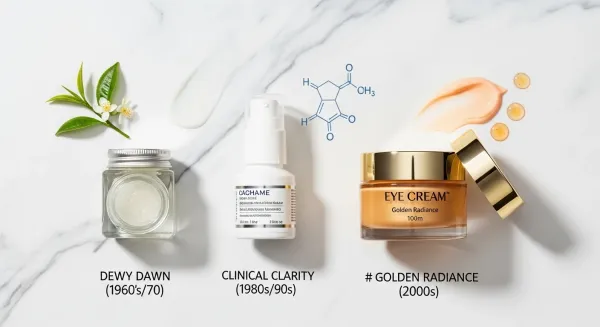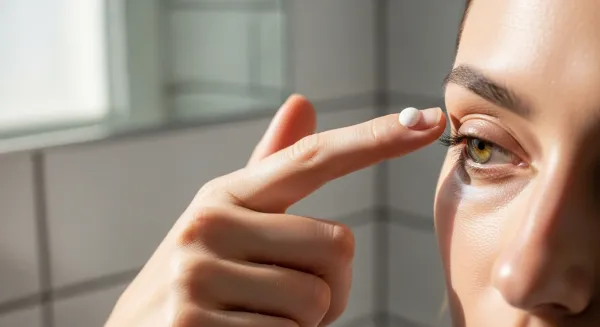Indoor vs Outdoor Sunscreen: Which One is Essential for Your Skin?
Discover the essential differences between indoor and outdoor sunscreen for optimal skin protection.

Sunscreen is a crucial part of skincare, but many people are unsure about the differences between indoor and outdoor sunscreens.
Understanding these differences can help you choose the right product for your skin type and lifestyle.
In this article, we will explore the importance of using sunscreen both indoors and outdoors, tips for application, and how to protect your skin throughout the year.
Key Takeaways
- Both indoor and outdoor sunscreens are important for skin protection.
- Indoor sunscreen protects against UVA rays and blue light from screens.
- Outdoor sunscreen should be broad-spectrum and water-resistant.
- Always apply sunscreen 15 minutes before going outside.
- Reapply every two hours, especially when swimming or sweating.
Understanding Indoor vs Outdoor Sunscreen

What is Indoor Sunscreen?
Indoor sunscreen is designed to protect our skin from harmful rays that can sneak in through windows or from screens.
Even when we’re inside, our skin is still at risk!
It’s essential to choose a product that offers broad-spectrum protection, which means it shields us from both UVA and UVB rays.
What is Outdoor Sunscreen?
Outdoor sunscreen is specifically formulated for use when we’re outside, especially during activities like swimming or hiking.
These sunscreens are often water-resistant and provide a higher level of protection against the sun’s intense rays.
Key Differences Between Indoor and Outdoor Sunscreens
Here’s a quick comparison to help us understand the differences:
Feature | Indoor Sunscreen | Outdoor Sunscreen |
|---|---|---|
Purpose | Protects against indoor UV exposure | Protects against outdoor UV exposure |
Water Resistance | Usually not water-resistant | Often water-resistant |
Formulation | Lightweight, often with antioxidants | Thicker, often with higher SPF |
Remember, wearing sunscreen indoors is just as important as wearing it outside. It helps reduce hyperpigmentation and keeps our skin tone even. Let’s not skip it, even when we’re lounging at home!
Why You Need Sunscreen Indoors

Impact of UVA and UVB Rays Indoors
We often think sunscreen is only for outdoor adventures, but that’s not true!
Even when we’re chilling inside, we can still be exposed to harmful rays.
UVA and UVB rays can sneak through windows, putting our skin at risk. So, let’s not skip the sunscreen, even on cloudy days!
Blue Light from Screens
Did you know that the blue light from our screens can also affect our skin?
It can lead to premature aging and other skin issues. So, while we’re binge-watching our favorite shows or scrolling through social media, let’s make sure we’re protecting our skin with sunscreen.
Common Myths About Indoor Sunscreen
There are a few myths floating around about sunscreen use indoors. Here are some common ones:
- Myth 1: "I don’t need sunscreen if I’m not going outside."
- Myth 2: "It’s only necessary on sunny days."
- Myth 3: "Sunscreen is only for the beach."
Let’s bust these myths and keep our skin safe!
Remember, protecting our skin indoors is just as important as when we’re outside. Let’s make sunscreen a part of our daily routine!
Choosing the Right Sunscreen for Outdoor Activities
When we head outdoors, picking the right sunscreen is super important.
We want to make sure our skin is protected from harmful rays! Here’s what we need to know:
Broad-Spectrum Protection Explained
Broad-spectrum sunscreens protect against both UVA and UVB rays. UVA rays can cause skin aging, while UVB rays are responsible for sunburn.
Here’s a quick table to help us understand:
SPF Level | UVB Protection |
|---|---|
SPF 15 | 93% |
SPF 30 | 97% |
SPF 50 | 98% |
Best SPF Levels for Outdoor Use
For outdoor activities, we should aim for at least SPF 30. This level gives us good protection while we enjoy the sun.
Here are some tips:
- Choose SPF 30 or higher for daily use.
- Opt for SPF 50 if you’re spending a lot of time outside.
- Reapply every two hours, especially if we’re sweating or swimming.
Water-Resistant Sunscreens
If we’re planning to swim or sweat, water-resistant sunscreens are a must! They stay effective for longer, even when wet. Here’s what to look for:
- Water-resistant for 40 minutes or more.
- Non-greasy formulas that won’t clog our pores.
- Easy application to make reapplying a breeze.
Remember, protecting our skin is key to enjoying the outdoors safely. Let’s make sunscreen a part of our fun in the sun!
How to Apply Sunscreen Correctly
Tips for Indoor Sunscreen Application
Applying sunscreen indoors might feel unnecessary, but it’s super important! Here’s how we can do it right:
- Apply 15 minutes before sun exposure. This allows the sunscreen to have enough time to provide the maximum benefit.
- Use a nickel-sized amount for your face and a generous amount for other exposed areas.
- Don’t forget to reapply every 4–6 hours, especially if you’re near windows or bright screens.
Outdoor Sunscreen Application Tips
When we’re heading outside, we need to be extra careful. Here’s our game plan:
- Choose a broad-spectrum sunscreen with at least SPF 30. This protects us from both UVA and UVB rays.
- Apply about a shot glass full of sunscreen to cover our entire body.
- Reapply every two hours, or more often if we’re sweating or swimming.
Common Mistakes to Avoid
Let’s make sure we’re not making these common mistakes:
- Skipping sunscreen on cloudy days. Remember, UV rays can still reach us!
- Not applying enough product. We need to cover all exposed skin.
- Forgetting areas like our ears, neck, and the tops of our feet.
Remember, protecting our skin is not just about looking good; it’s about keeping ourselves safe from harmful rays!
Additional Sun Protection Tips

Using Protective Clothing
When we think about sun protection, we often just think of sunscreen. But protective clothing is a game changer! Here are some tips:
- Choose long sleeves and pants when possible.
- Opt for wide-brimmed hats to shield your face.
- Look for UV-protective fabrics that offer extra defense.
Seeking Shade
Finding shade is a simple yet effective way to protect our skin. Here’s how we can do it:
- Stay under umbrellas or trees during peak sun hours (10 AM to 4 PM).
- Plan outdoor activities for early morning or late afternoon.
- Create shade with portable canopies if you’re at the beach or park.
Incorporating Antioxidants in Your Routine
Antioxidants are like superheroes for our skin!
They help fight off free radicals, which can cause damage and lead to early signs of aging. Here are some top antioxidant ingredients we should look for:
- Vitamin C: Brightens skin and protects against sun damage.
- Green Tea: Soothes skin and reduces redness.
- Resveratrol: Helps with skin repair and has anti-aging properties.
Remember, taking care of our skin today means we’ll thank ourselves tomorrow!
Seasonal Sunscreen Tips

Winter Sunscreen Tips
When winter hits, our skin can get super dry and flaky. We need to keep it hydrated!
Here are some tips to protect our skin:
- Moisturize More: Switch to a thicker moisturizer with ingredients like hyaluronic acid.
- Gentle Cleansing: Use creamy cleansers that won’t strip our skin of its natural oils.
- Don’t Forget Sunscreen: Even in winter, UV rays can harm our skin, especially when reflected off snow.
Summer Sunscreen Tips
Summer means fun in the sun, but we need to be careful! Here’s how to keep our skin safe:
- Choose the Right Sunscreen: Look for broad-spectrum SPF 30 or higher.
- Reapply Often: We should reapply every two hours, especially if we’re sweating or swimming.
- Stay Hydrated: Drink plenty of water to keep our skin fresh and plump.
Transitioning Your Sunscreen Routine Between Seasons
As the seasons change, so should our sunscreen routine. Here’s how to adapt:
- Monitor Your Skin: Pay attention to how your skin reacts to different weather.
- Adjust Products: Use lighter products in summer and richer ones in winter.
- Stay Consistent: Remember, sunscreen is essential all year round, even on cloudy days!
Remember, adapting our skincare routine with the seasons is key to maintaining healthy, glowing skin!
Wrapping It Up: Indoor vs Outdoor Sunscreen
So, here’s the deal: whether you’re chilling at home or out in the sun, sunscreen is your skin’s best buddy.
Indoor sunscreen helps protect against sneaky UV rays that can still get through windows and from screens. Outdoor sunscreen is a must for those sunny days when you’re soaking up the rays.
Remember, it’s not just about avoiding sunburn; it’s about keeping your skin healthy and looking good for years to come. So, don’t skip the sunscreen, no matter where you are!
Keep your skin happy and glowing!




